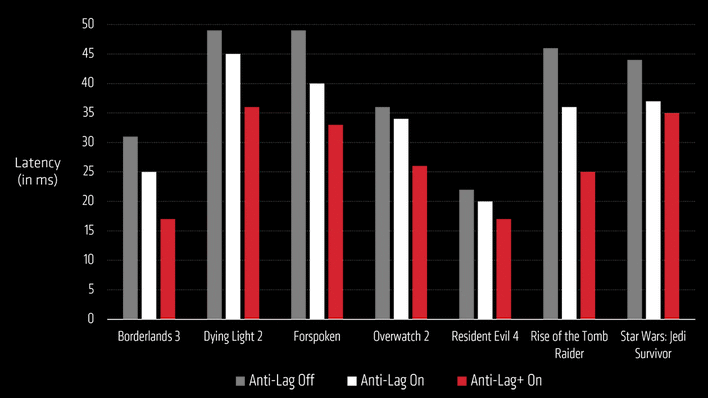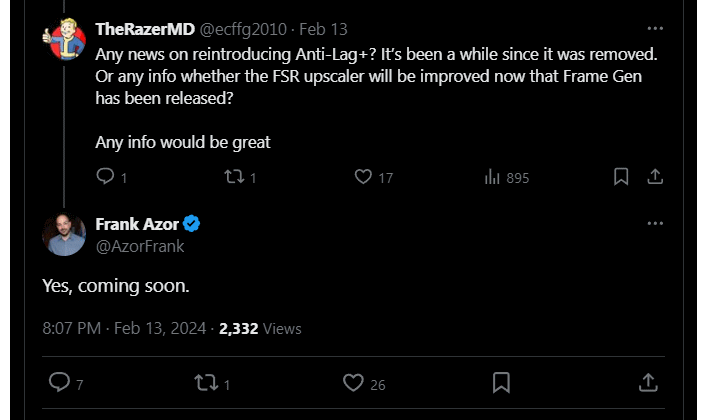AMD Confirms Radeon Anti-Lag+ Is Returning Soon After Cheat Ban Fiasco

To get you up to speed quickly, NVIDIA and AMD both have their own input lag reduction technologies. NVIDIA's got a Low-Latency Mode in its driver that trades a bit of framerate stability for input lag, but the green team also has a feature called Reflex that game developers can integrate to further improve input responsiveness in their games.

AMD has a feature called Radeon Anti-Lag that functions similarly to NVIDIA's Low-Latency Mode, but late last year it also debuted a feature called Anti-Lag+ that it claimed offered similar results to NVIDIA's Reflex. The big difference between Reflex and Anti-Lag+ is that Anti-Lag+ remained at the driver level, where Reflex requires game-specific integration.
We say "remained" in the past tense because almost immediately after Anti-Lag+ debuted, AMD had to pull it from its drivers due to a spate of gamers getting banned from online games. You see, the way Anti-Lag+ works is by detouring function calls to system libraries. That also happens to be exactly the way many game cheats work, so games like Counter-Strike 2, Fortnite, and Apex Legends (among others) were automatically banning users with Anti-Lag+ enabled. This isn't as unfair as it sounds; there's no way for the anti-cheat to know the difference between Anti-Lag+ and something like an aimbot, for example.
This left AMD in the unenviable position of having no response to NVIDIA's Reflex, but it seems like Anti-Lag+ may make a comeback sooner than later. AMD's Frank Azor, in a reply to a post asking about Anti-Lag+ on Xwitter, said that the feature is "coming soon." We can't be completely sure what he meant because TheRazerMD's post actually asked multiple questions, but in any case, Azor's response of "Yes, coming soon." certainly implies that we'll at least know more about the fate of Anti-Lag+ before long.
Anti-Lag+ already required game-specific profiles in the driver, but it wouldn't surprise us if AMD ultimately has to go the route of asking developers to integrate the solution into their games much as NVIDIA does with Reflex. If the tech is part of the game, that makes it much less likely to set off anti-cheat packages. However, there are plenty of single-player, offline, or cooperative games that could still benefit from a driver-level input lag reduction feature. We'll just have to wait and see what AMD announces.


